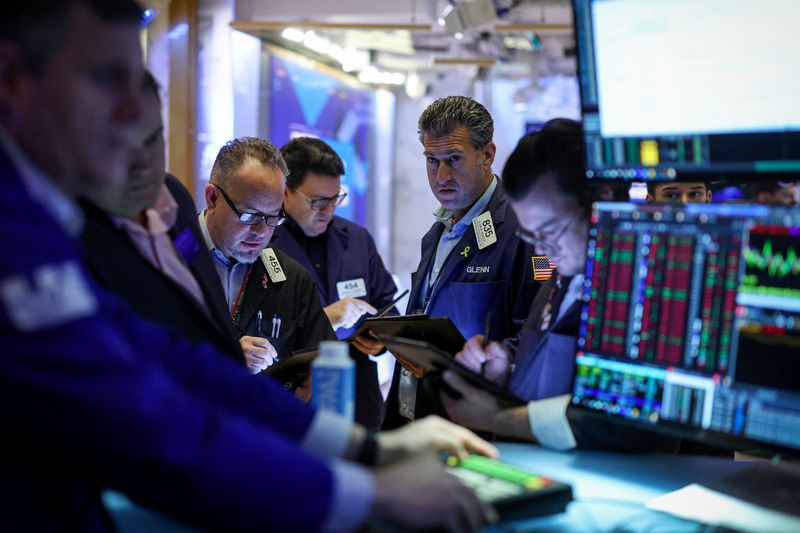By Chuck Mikolajczak
NEW YORK (Reuters) -U.S. stocks rallied to close out the trading week on Friday after two lackluster sessions as a cooler-than-expected inflation report and comments from Federal Reserve officials eased worries about the path of interest rates.
The latest inflation report in the form of the Personal Consumption Expenditure (PCE) index showed a 2.4% rise in November on an annual basis, just below the 2.5% estimate of economists polled by Reuters.
Consumer spending increased in November in another sign of economic resilience.
After the data, traders raised their slightly increased expectations for Fed rate cuts in 2025, now expecting the first one in March and another by October. Before the data, traders saw a roughly 50% chance of a second rate cut by December 2025.
On Wednesday, the Fed announced its third interest-rate cut of the year but forecast in its summary of economic projections (SEP) just two 25-basis point cuts for 2025, down from its September view of four cuts, in a nod to the economy's continued health and sticky inflation.
The announcement sparked a sharp sell-off late on Wednesday, which equities were unable to bounce back from on Thursday. Even with Friday's rally, each of the three major U.S. indexes declined for the week.
Also providing support were comments from Fed officials, with some acknowledging they were starting to factor in fiscal policy uncertainty, such as tariffs, in their outlooks.
"It's kind of obvious what's going on - it's just this PCE plus dovish Fed commentary offset the market overreaction to the hawkish cut that everybody was expecting," said Jay Hatfield, CEO at Infrastructure Capital Advisors in New York.
"We've seen this like 10 times during this Fed cycle. The market just always overreacts on one side or the other."
The Dow Jones Industrial Average rose 498.82 points, or 1.18%, to 42,841.06, the S&P 500 gained 63.82 points, or 1.09%, to 5,930.90 and the Nasdaq Composite gained 199.83 points, or 1.03%, to 19,572.60.
The Dow and S&P recorded their biggest daily percentage gains since Nov. 6.
For the week, the S&P 500 fell 1.99%, the Nasdaq declined 1.78%, and the Dow dropped 2.25%.
The Nasdaq snapped a four-week streak of gains, with the S&P 500 suffering its biggest weekly percentage decline in six weeks. The Dow saw its third consecutive weekly fall.
Each of the 11 major S&P sectors advanced in the broad-based rally, led by a gain of 1.8% in real estate and buoyed by a drop in Treasury yields.
Small-cap stocks as measured by the Russell 2000, which are also seen as likely to benefit from lower interest rates, rallied 0.9%.
Markets were also monitoring the U.S. Congress as it scrambled to avert a partial government shutdown before a midnight deadline. Republican leaders in the U.S. House of Representatives said they would vote on Friday to keep the federal government operating.
Advancing issues outnumbered decliners by a 2.84-to-1 ratio on the NYSE and by a 2.12-to-1 ratio on the Nasdaq.
The S&P 500 posted three new 52-week highs and 23 new lows, while the Nasdaq Composite recorded 51 new highs and 233 new lows.

Friday's session also marks the simultaneous expiry of quarterly derivatives contracts tied to stocks, index options and futures, also known as "triple witching," which boosted trading activity.
Volume on U.S. exchanges was 21.58 billion shares, compared with the 14.87 billion average for the full session over the last 20 trading days.